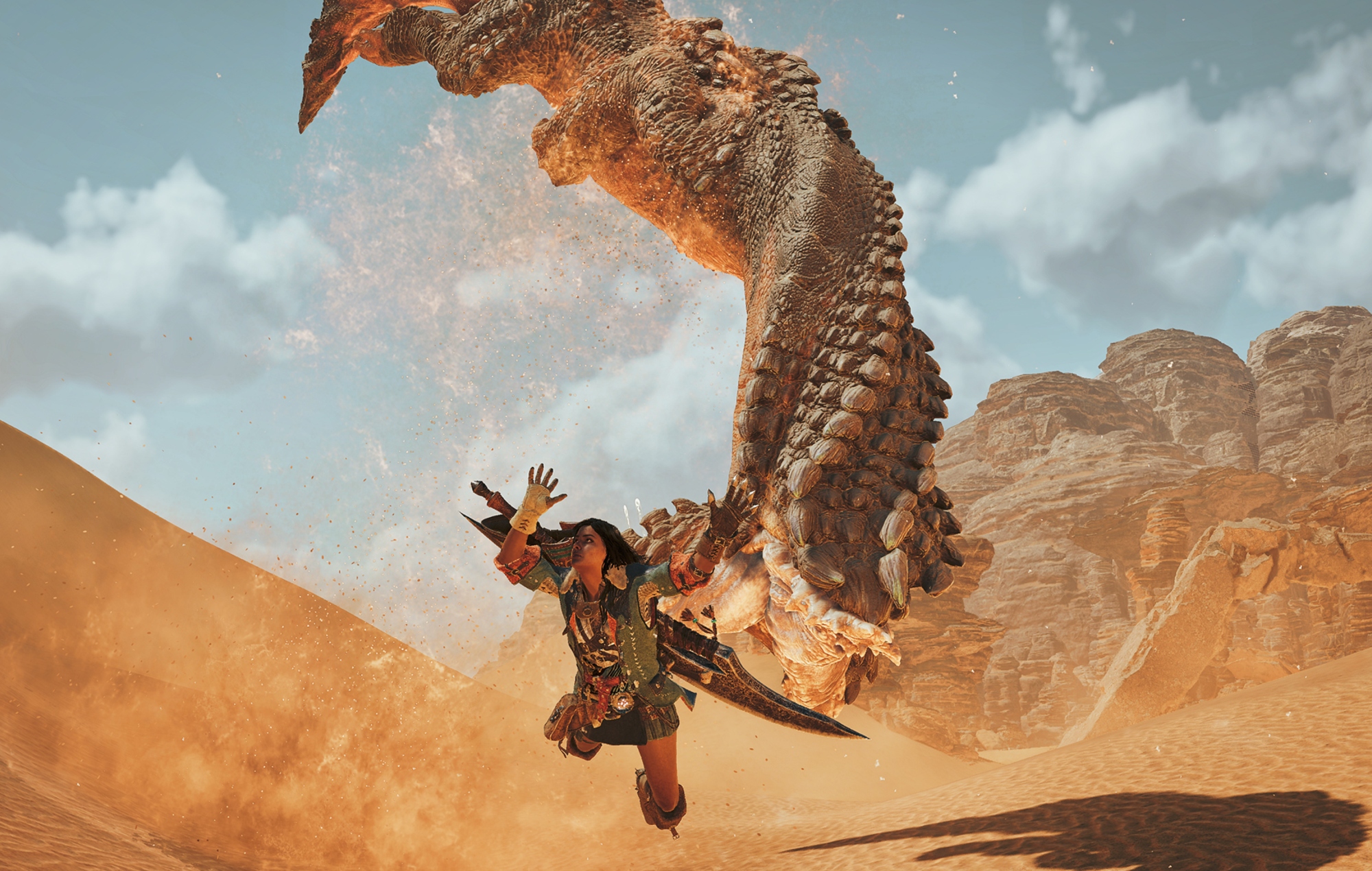In 2018, Monster Hunter World catapulted Capcom’s action role-playing series from something your pal promised was good if you would just play it for 40 hours, to a widely-celebrated powerhouse. Follow-up Monster Hunter Rise won over even more fans, and both titles are now Capcom’s top-selling games of all time. Now, the Japanese developer is set to launch Monster Hunter Wilds, which we got to see director Yuya Tokuda play at Summer Game Fest – and despite not getting the chance to play it ourselves, we walked away feeling like it was the best thing we’d seen at the event.
READ MORE: ‘Monster Hunter’ review: catch-the-creature feature for action junkies
First thing’s first: Monster Hunter Wilds is not an open world game. The instanced open areas seen in past Monster Hunter titles, in which you explore and hunt increasingly dangerous monsters, are back. Our demo took place in the Windward Plains (the desert area from Wilds’ trailers) and right away the upgrades are evident. Each zone has a base camp, allowing hunters to seamlessly head out to the field from the village, rather than going back to a central hub and loading in like in previous entries. This also goes for starting missions, which kick off as soon as you begin fighting the given monster, instead of when you load in and start looking for it. Once the target’s dead, you’re now immediately let back into the world, cutting out the awkward minute you need to wait through in previous games.
Monster Hunter Wilds. Credit: Capcom.
Unsurprisingly given the game is running in the RE Engine, Monster Hunter Wilds looks phenomenal. This was particularly clear during a demonstration of Wilds’ biggest new feature, weather. Each area has its own ecosystem, endemic life and, of course, monsters that call it home, but in Wilds the map changes as you explore. We watched as Windward Plains’ sandy dunes were engulfed with a sandstorm, followed by a thunderstorm which brought the area’s (currently unnamed) Apex Monster out into the field. Eventually, the storm subsided. Grass returned to the plains, and carnivores came out of hiding. This mechanic is one of the things that excited us the most, as the feature will likely keep you on your toes and can throw a mission into disarray.
Of course, the monsters themselves are still the star of the show. The demo consisted of the hunter tracking down and battling the Alpha Doshaguma. This particular beast shows off another interesting update to the series’ formula – large monsters can roam around in packs, while others, like the serpentine Balahara, can create traps in the world to catch you or other monsters (like the aforementioned pack of Doshaguma). It means a given hunt may require more tactical thinking, lest you get overwhelmed.
Monster Hunter Wilds. Credit: Capcom.
Elsewhere, Wilds takes a page from Rise‘s Palamutes with the new Seikret mount, a big bird creature that will be a companion to you and your Palico. You can use them to get around faster and all that cool stuff, but the real highlight of these creatures is the added ability to swap weapons. Seikrets can store a second weapon for the hunter, allowing you to change on the fly to match your current predicament. This is open to any combo you would like – the obvious choice being a close range weapon and a Bowgun – but yes, you can presumably carry two Hammers if that’s what you really want.
As for combat, we’re back to the series’ weighty hack-and-slash style instead of Rise‘s over the top Wirebug and Switch Skills. However, the new mechanic this time around is Focus Mode. This allows you to aim your weapon (even melee ones) and hit wounded areas to deal a highly damaging attack, while a Clash mechanic lets your character overpower the monster. For the latter, we see a pretty brutal demonstration when one hunter uses the Heavy Bowgun to blast a shell into an unfortunate Doshaguma’s mouth. Neither feature seems to be as overwhelming as the ones we saw in Rise, instead allowing for some extra strategic layers and more cinematic moments during a hunt.
Yet with Monster Hunter’s rise in popularity, it feels like we’ve lost some emphasis on the traditional hunting aspect, with things like tracking made easier in recent entries. While it’s hard to tell from the demo, Wilds seems like a step back in the right direction. Tying in with the weather and time mechanics, there are some monsters that will only show up in specific stages of the world – like the Apex, which is only supposed to appear during lightning storms. That being said, the actual hunting may be relegated to the free-roaming areas as opposed to the missions themselves, as they now kick off when you first encounter the monster.
Hands-off demos at shows like these are rarely as exciting as getting to play it yourself, which speaks to just how impressive Monster Hunter Wilds looks in action. The series’ ascension to superstardom has been incredible to watch as long-time fans of the series, and Wilds looks like it could raise its prestige to even greater heights.
Monster Hunter Wilds will launch for PS5, Xbox Series X|S and PC in 2025, though an exact release date is yet to be confirmed.
The post ‘Monster Hunter Wilds’ looks like a huge step up for Capcom’s iconic beast-bashing series appeared first on NME.



